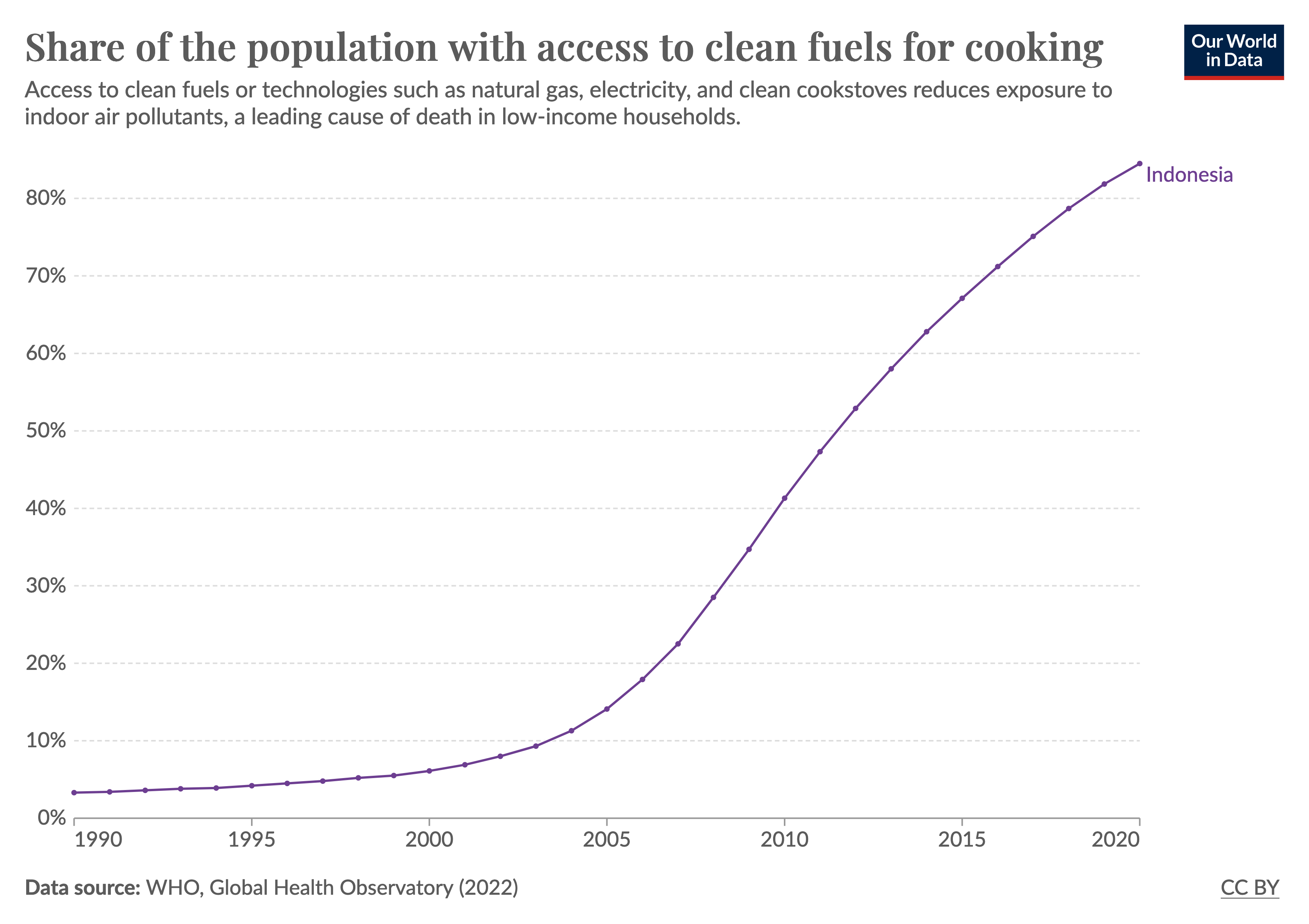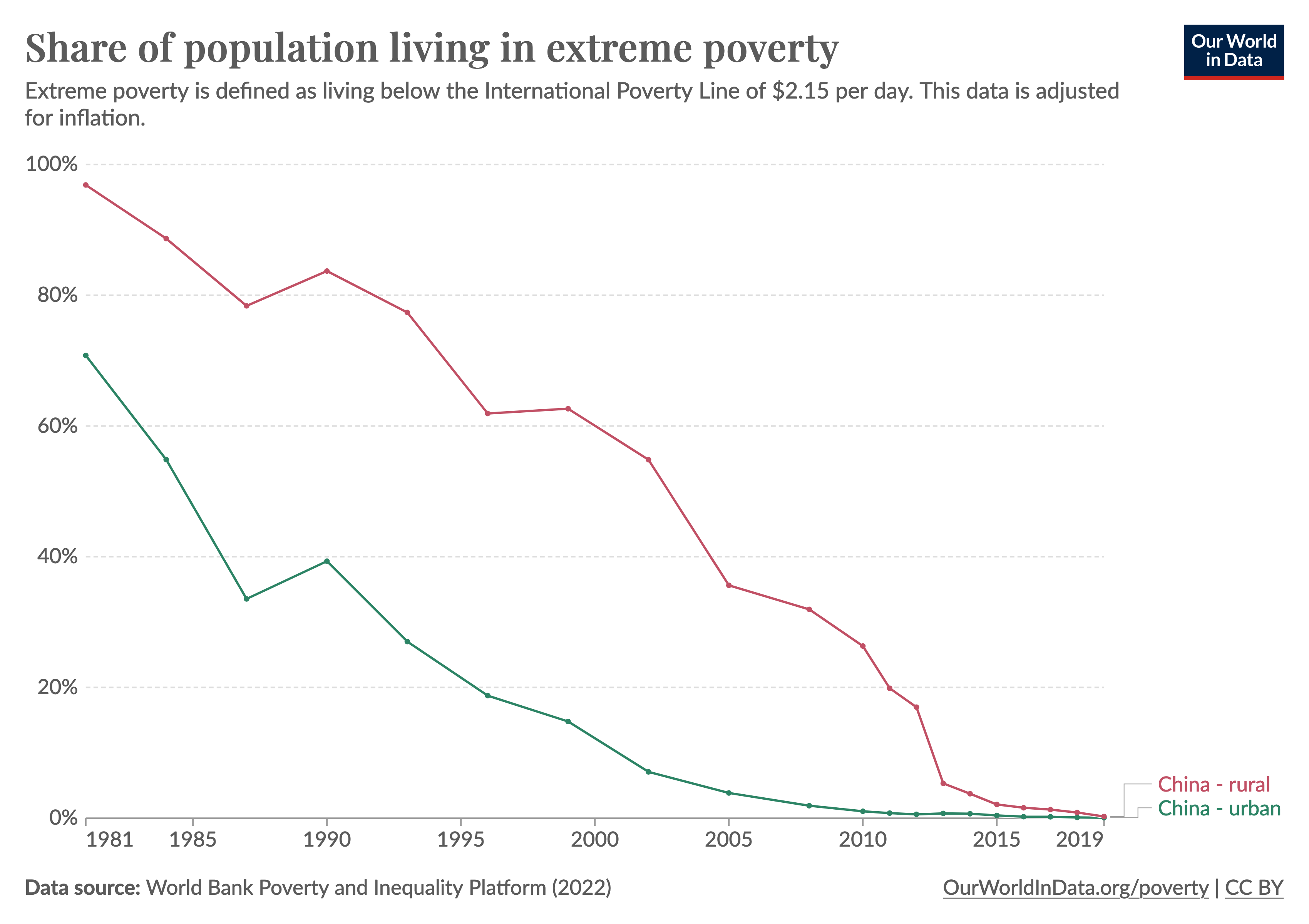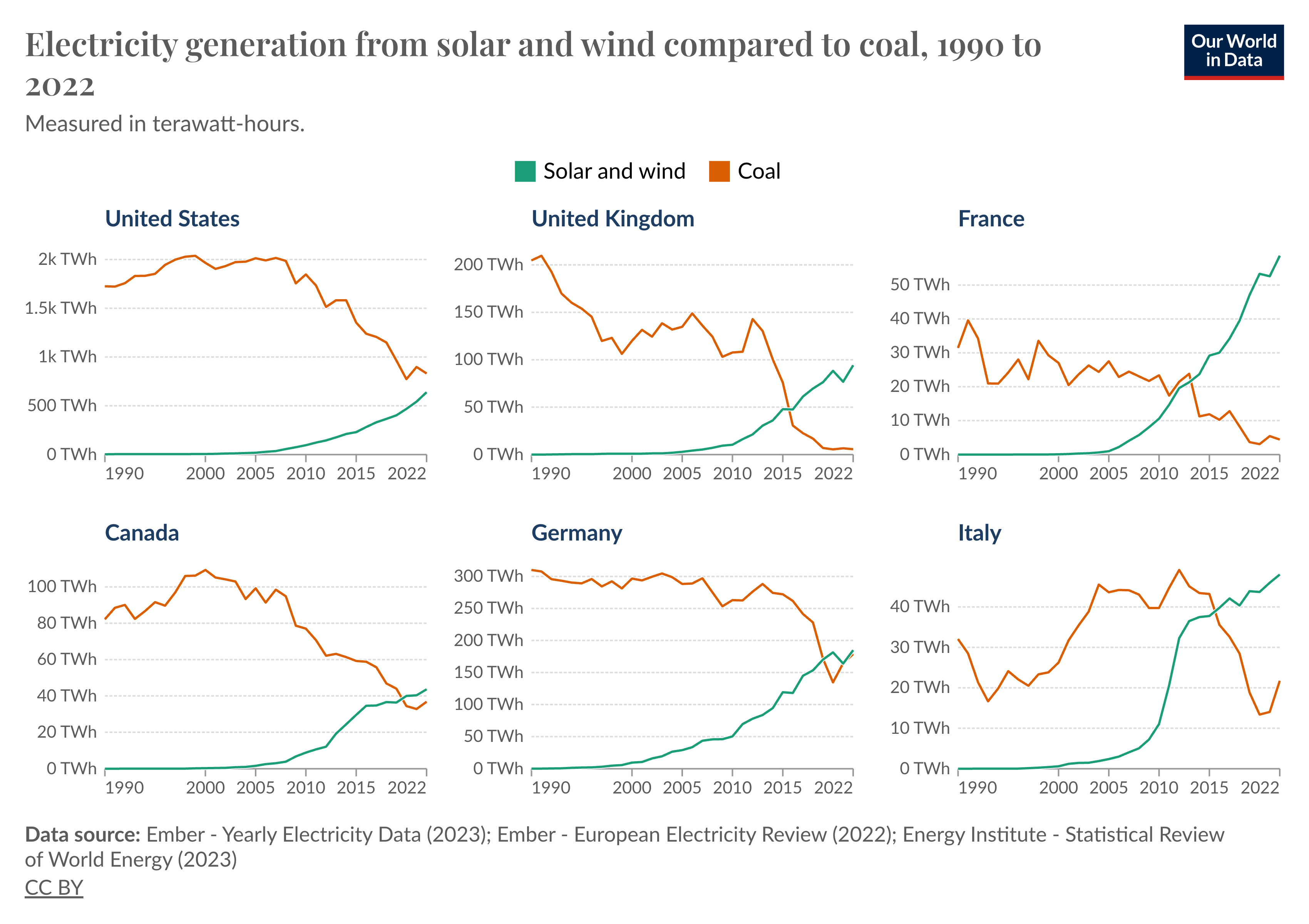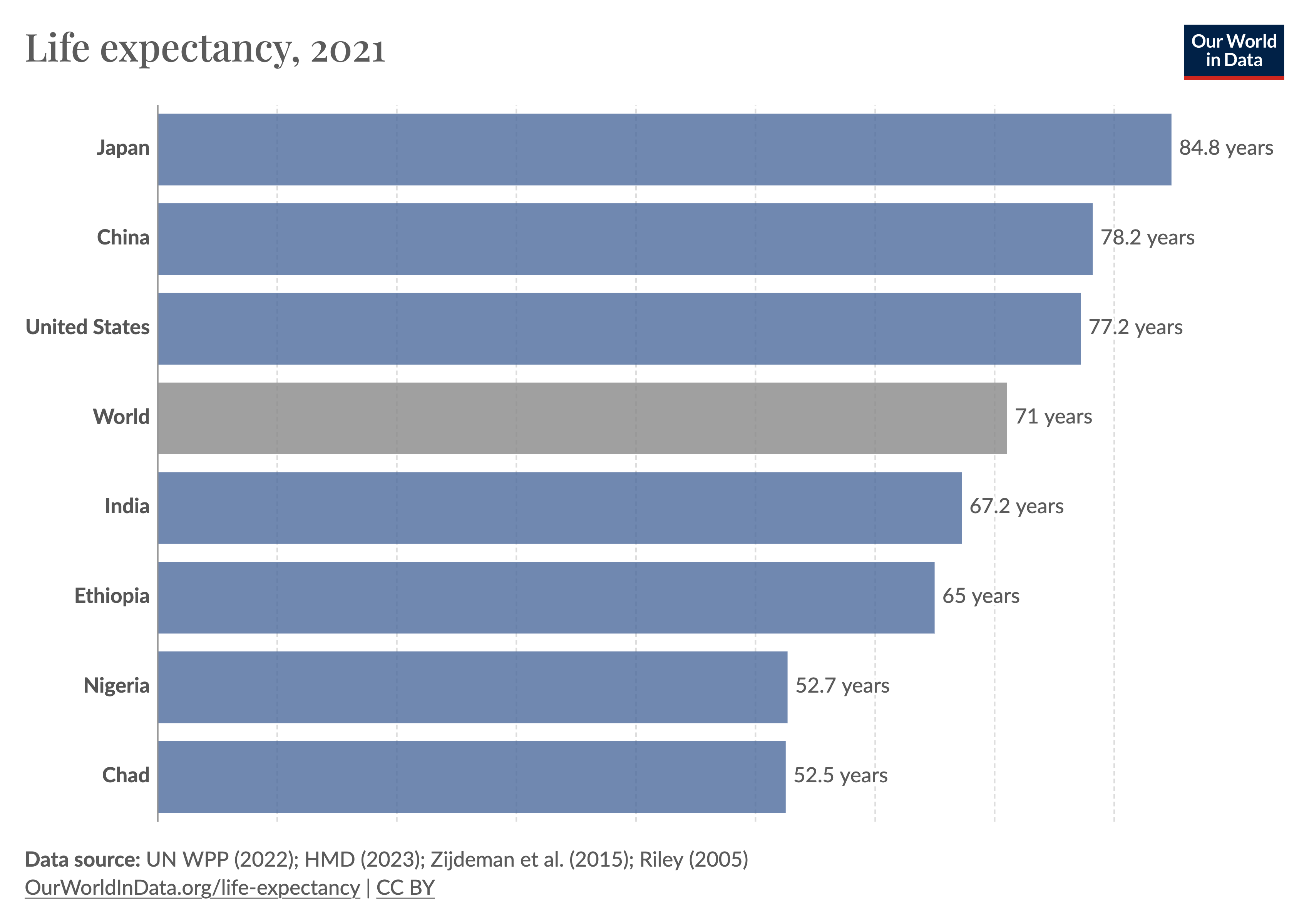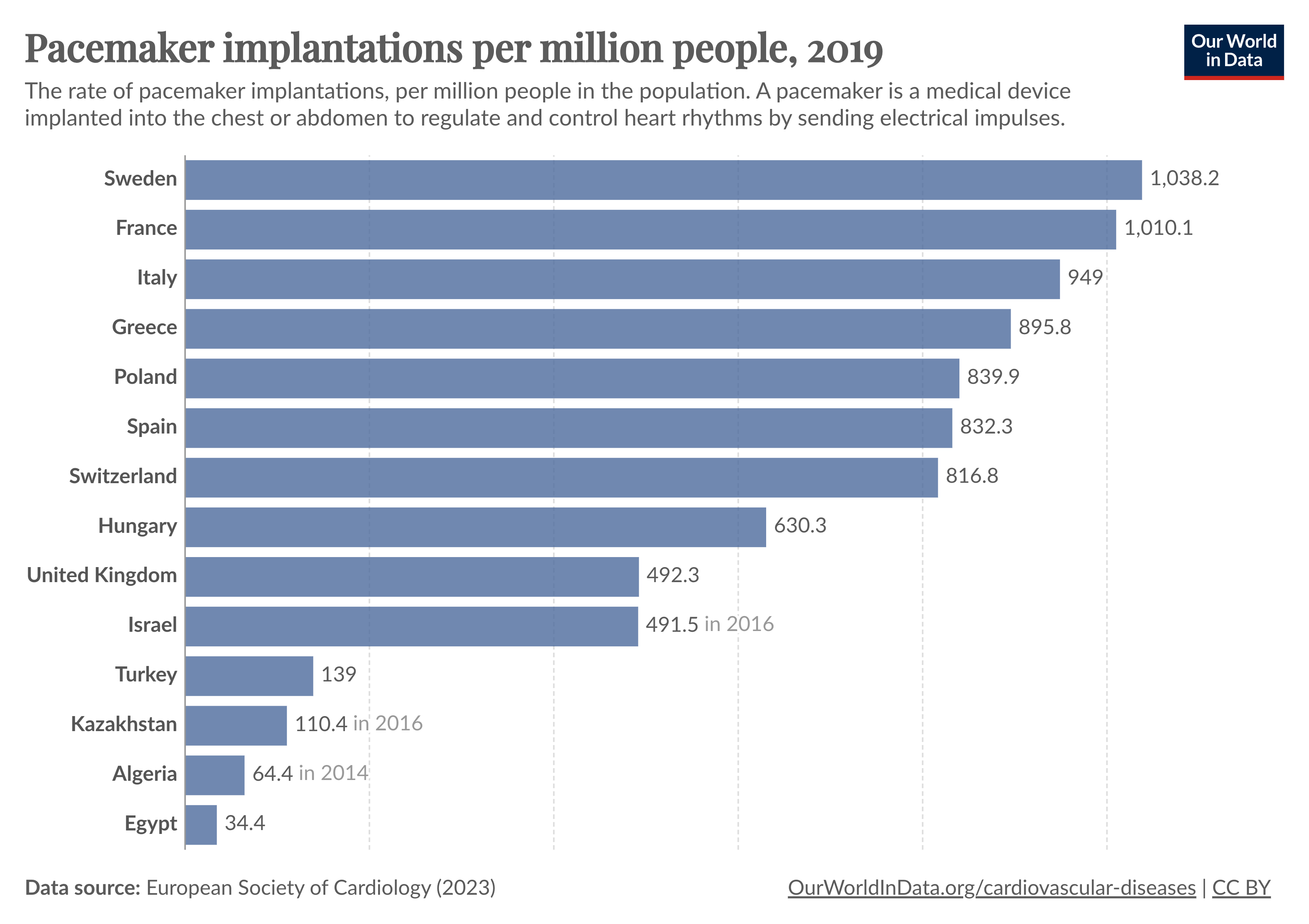Data insights
Bite-sized insights on how the world is changing, written by our team.
Colonialism meant that for centuries, many territories and people were ruled from elsewhere
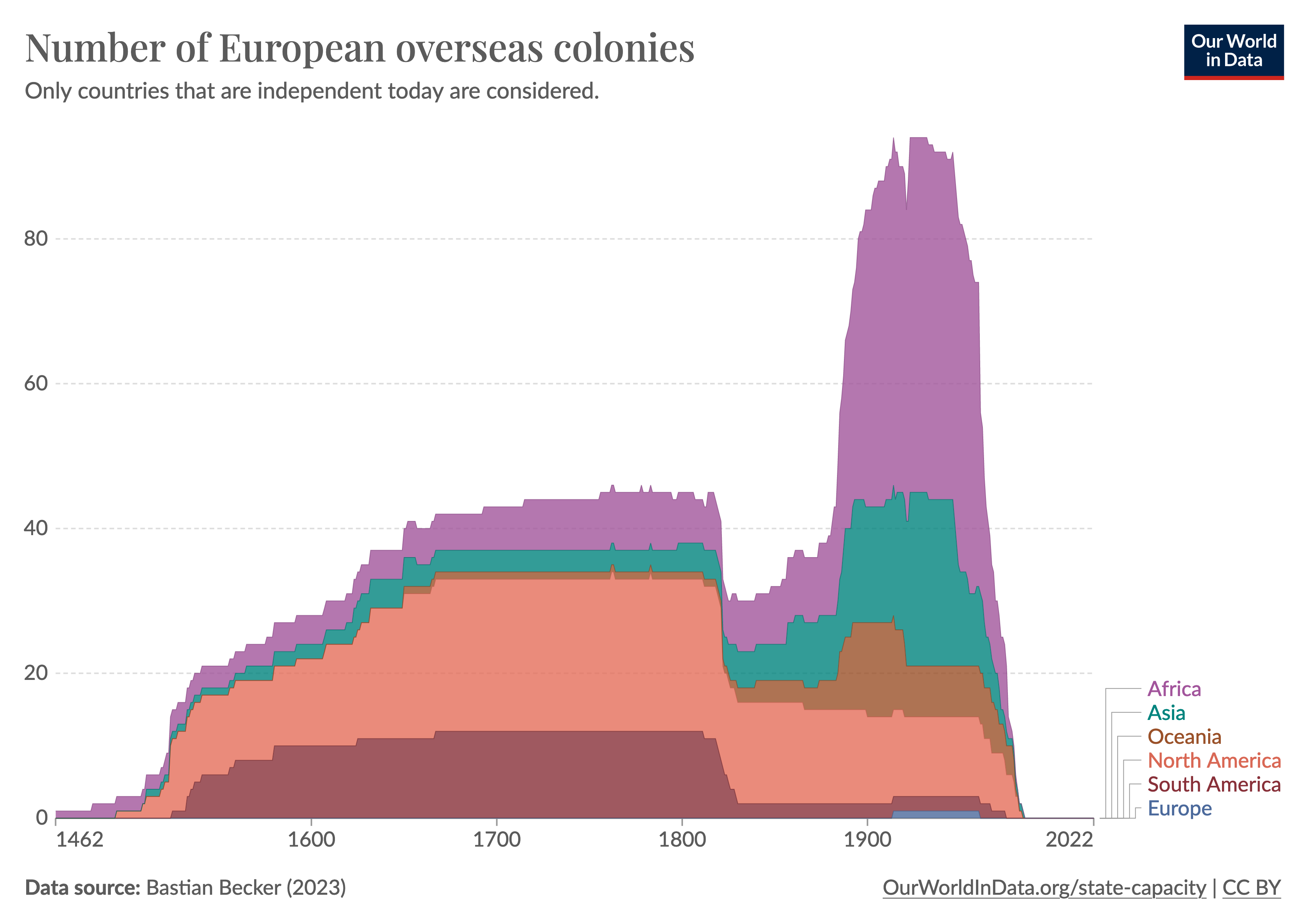
Two hundred years ago, large parts of the world were ruled by a few European colonial powers, as the chart shows.
Since then, people in many countries have fought against colonial rule.
A first wave of countries gained independence in the 19th century, particularly in the Americas.
However, most countries did not gain independence until the middle of the 20th century.
Plastic recycling rates are increasing, but slowly, in many regions
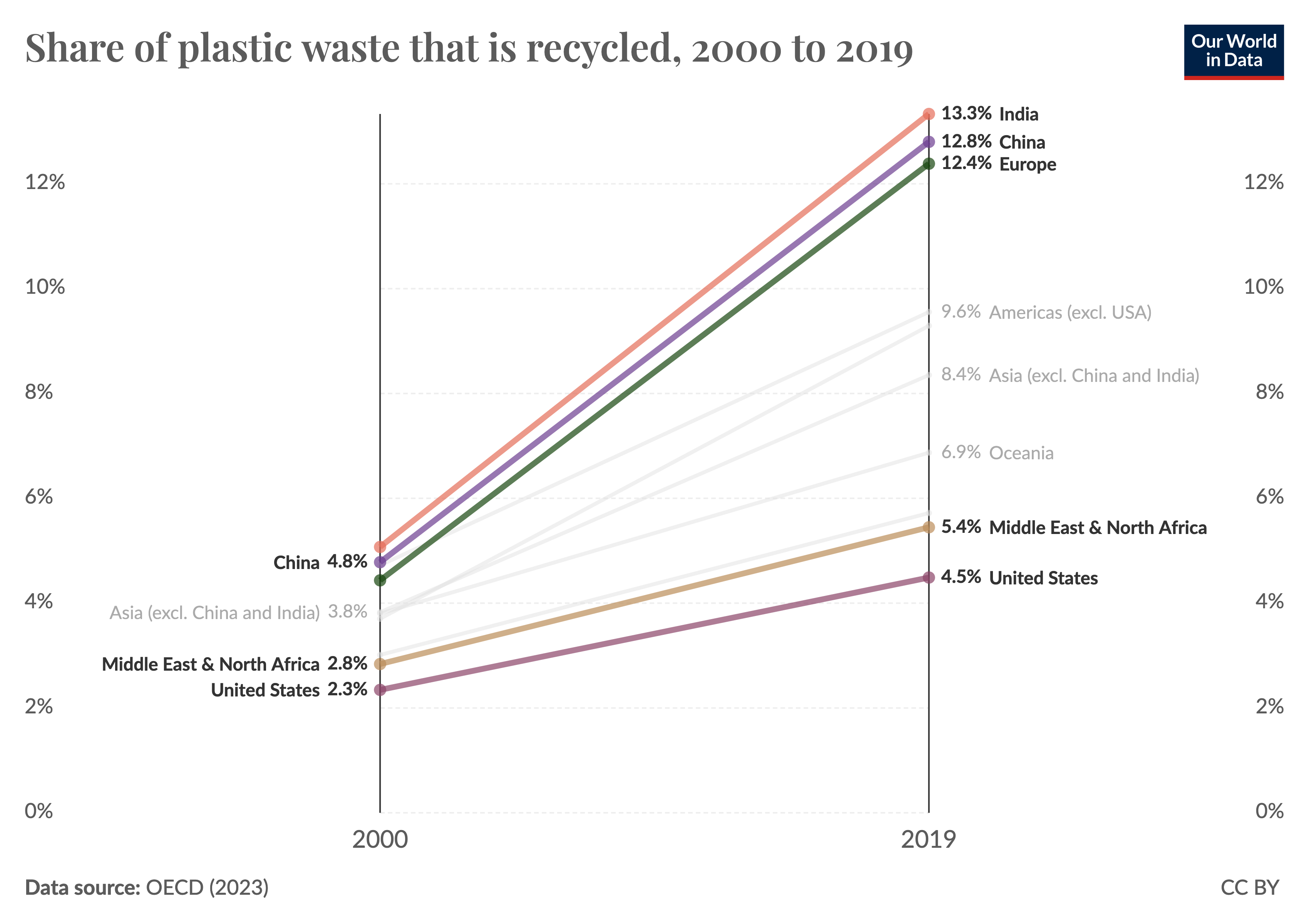
Over the last twenty years, plastic waste recycling has considerably increased worldwide, as the chart shows.
OECD countries in the European Union, India, and China have spearheaded this growth. By 2019, recycling rates were 12–13%. Non-OECD Asian countries and Latin America have also made headway, but more slowly.
The United States and the Middle East & North Africa region have seen more sluggish advances, with the US only managing to reach a 4.5% recycling rate by 2019, according to the OECD data.
Different regional strategies and capacities have led to markedly different outcomes in plastic waste management.
The modal age at death has been rising
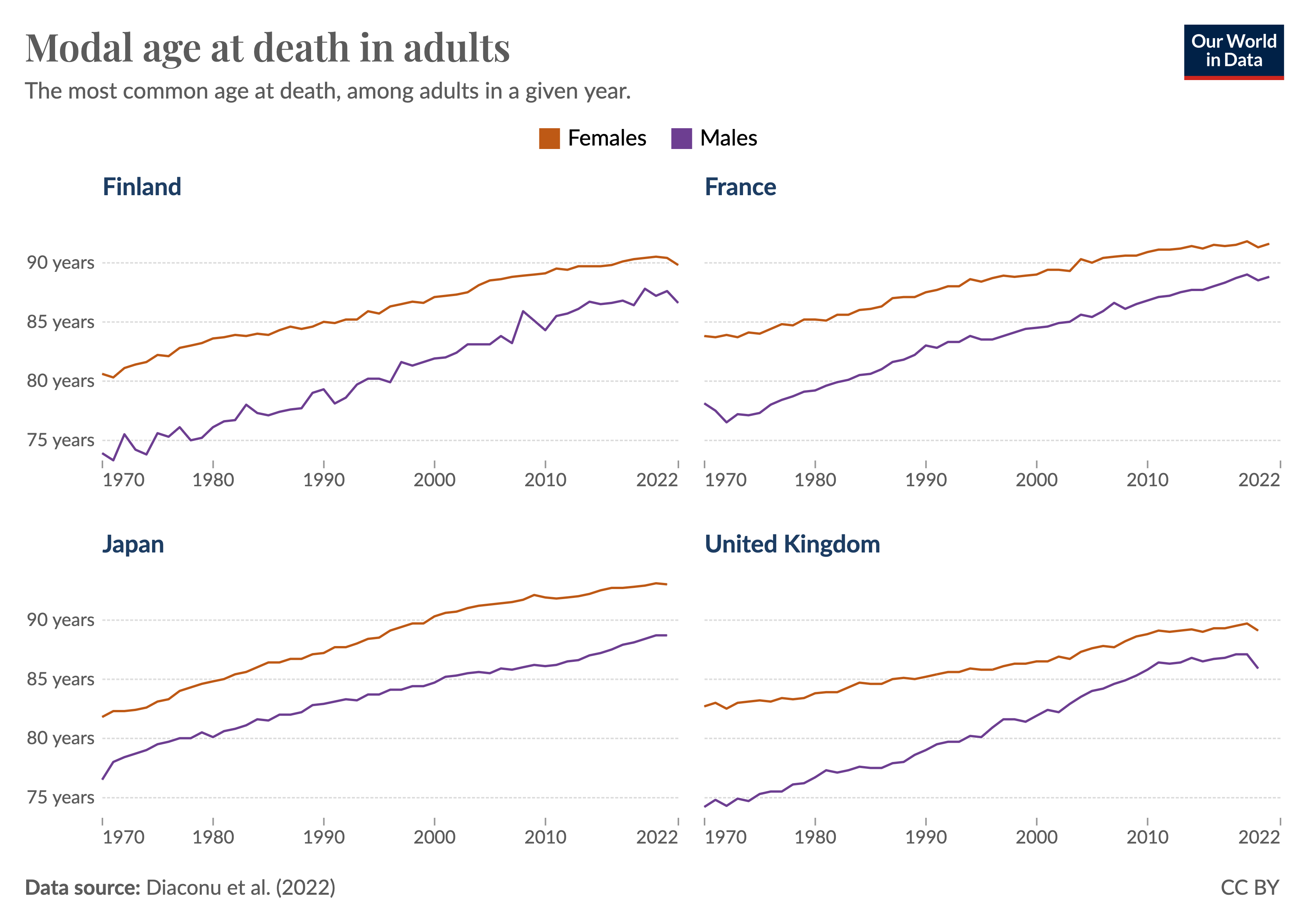
The “modal age at death” is the most common age at which people in a population die. The modal age at death for women in Japan in 2021 was 93. In France, it was 92.
This metric helps us understand trends in longevity at older ages. Unlike life expectancy, it is not affected by infant or child mortality.
You can see that over time, the figure has been rising steadily. In France in 1970, the modal age at death was 84 years for women, but now it is 8 years higher.
Large gains in longevity have occurred even among the elderly.
Japan’s cherry trees have been blossoming earlier due to warmer spring temperatures
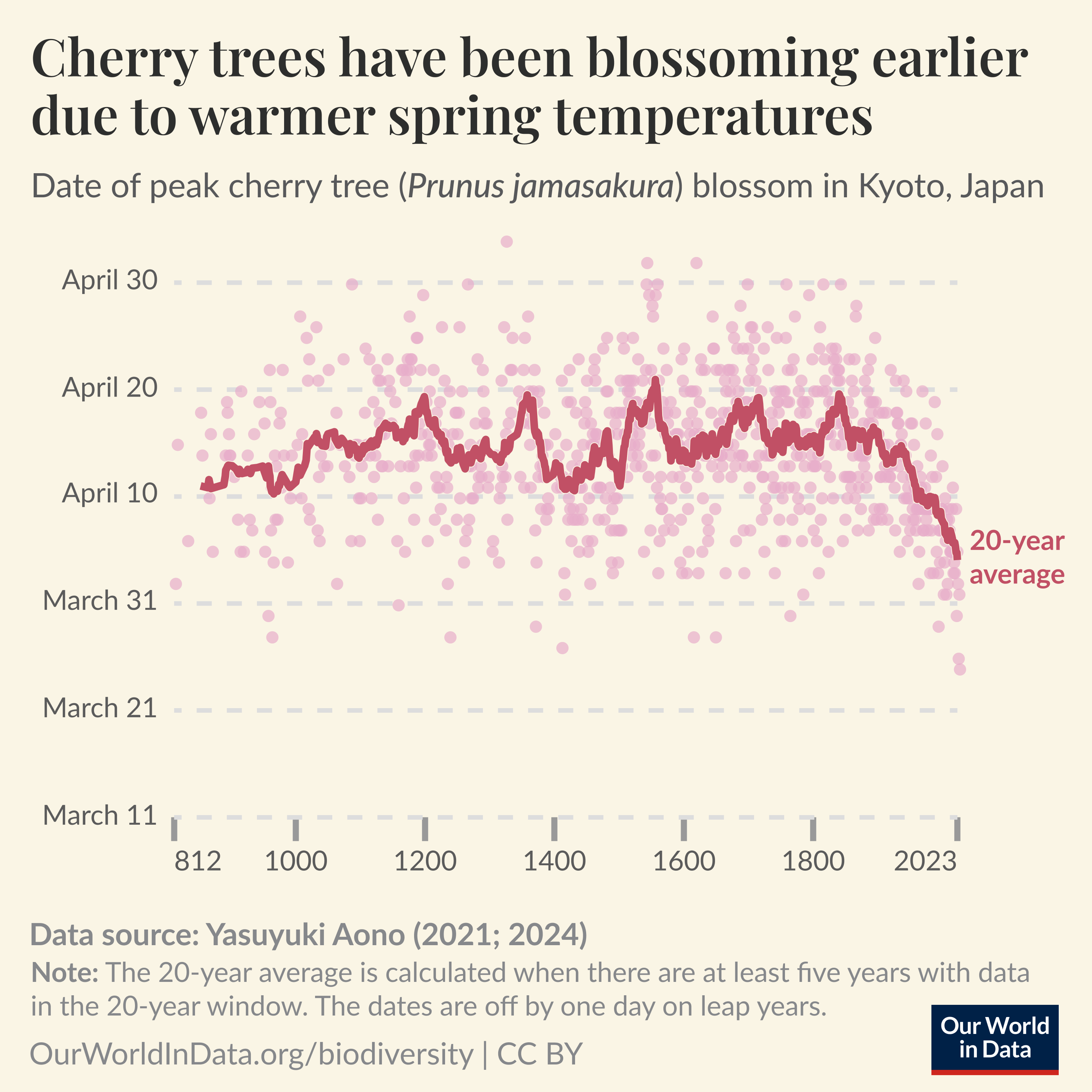
The peak flowering of cherry trees in Kyoto, Japan, has been recorded since the ninth century. Yasuyuki Aono and colleagues from the Osaka Prefecture University collated this data from historical diaries and chronicles, indicating the dates on which cherry blossom viewing parties had been held or other observations of peak blossom.
In 2023, the peak cherry blossom happened on 25 March — the earliest date since recording began.
This long-run data is a proxy measure for how the climate has changed. The onset of the cherry blossom is linked with warmer temperatures. The combined effects of urbanization and higher temperatures due to climate change have caused the peak blossom to gradually move earlier in the year since the early 20th century.
Declining child mortality, fast and slow
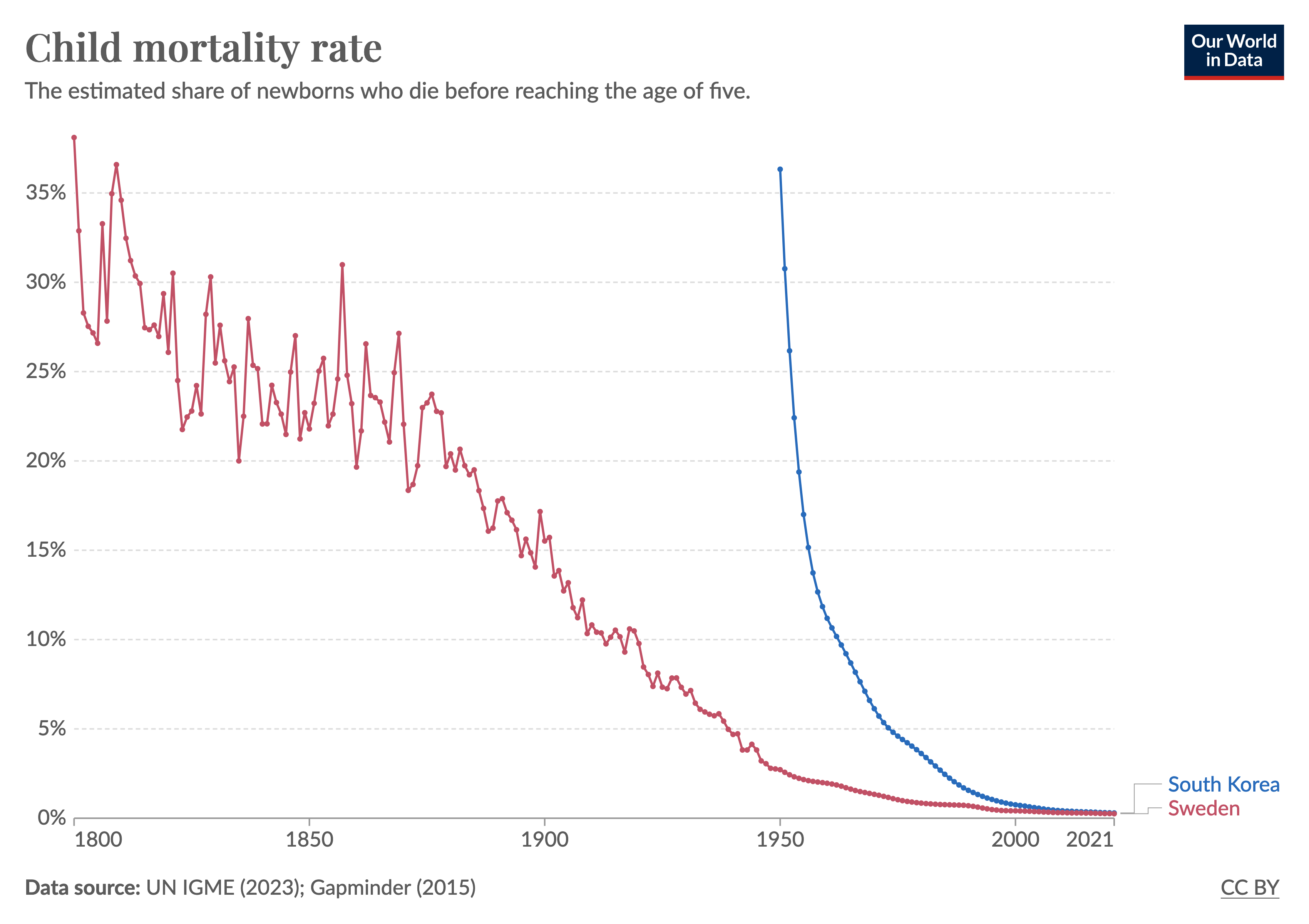
Two centuries ago, about one in three children in Sweden died before they were five years old, as you can see on the chart.
Since then, the child mortality rate in Sweden has declined to 0.2%.
South Korea achieved a similar reduction much faster. This is often the case: those countries that first achieve an improvement in living conditions often need much longer than some of those countries catching up later — countries that catch up can learn from what worked elsewhere.


.png)
